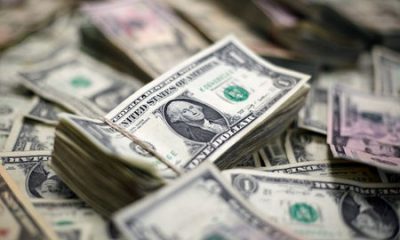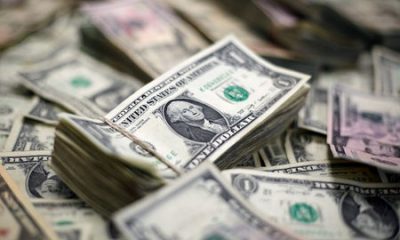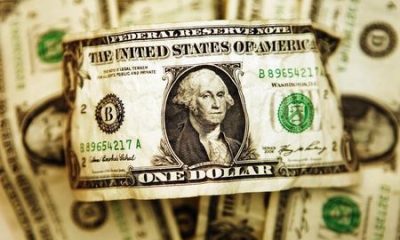Forex
Yuan slides after PBOC, dollar little changed on MLK Day
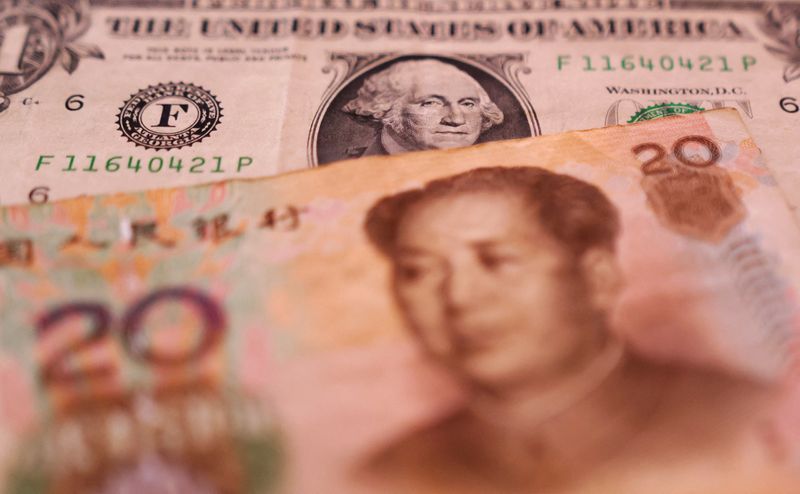
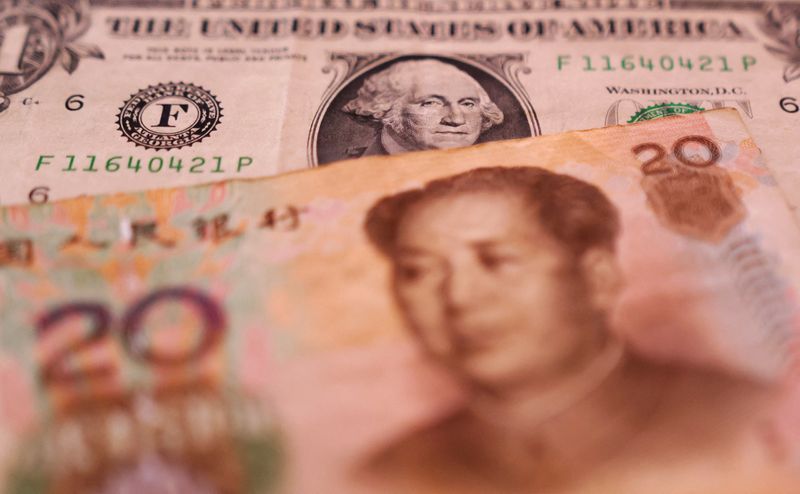
© Reuters. U.S. Dollar and Chinese Yuan banknotes are seen in this illustration taken January 30, 2023. REUTERS/Dado Ruvic/Illustration
By Joice Alves and Rae Wee
LONDON/SINGAPORE (Reuters) -The yuan fell on Monday to a one-month low after China’s central bank surprised markets by keeping its medium-term policy rate steady, while the dollar was little changed on Martin Luther King (MLK) Jr. Day, a public holiday.
The People’s Bank of China (PBOC) left interest rates unchanged when rolling over maturing medium-term policy loans, defying market expectations for a cut to shore up China’s bumpy post-pandemic economic recovery.
That sent the sliding to a one-month low of 7.1813 per dollar before recouping some of those losses to trade down 0.08% at 7.1749.
Its offshore counterpart fell as far as 7.1906 per dollar, languishing near Friday’s one-month trough.
“China’s central bank kept its medium-term lending facility rate unchanged at 2.5%, contrary to the widespread consensus of a 10 basis points cut,” said Tommy Wo, senior economist at Commerzbank (ETR:).
However, rate cuts are still on the table, he added.
“The U.S. Fed’s pivot has allowed the PBoC to conduct more accommodative monetary policy. There will be more room for PBoC rate cuts when the timing of Fed’s rate reduction becomes clearer”.
China’s fourth-quarter gross domestic product (GDP), December industrial production, retail sales and unemployment rate are among the key economic indicators out on Wednesday, which are likely to provide further clarity on the outlook for the world’s second-largest economy.
The , measuring the U.S. currency against six peers, was little changed up 0.07% to 102.58, ahead of the U.S. Martin Luther King Day holiday on Monday.
Bets for Fed cuts this year, beginning as early as March, have risen after data on Friday showed U.S. producer prices unexpectedly fell in December, sending Treasury yields sliding in response. [US/]
“Despite the upside surprise to the CPI on Thursday, investors grew increasing confident that the Fed is likely to cut rates soon,” said Jim Reid, strategist at Deutsch Bank.
Market pricing now points to a 77% chance that the U.S. central bank will begin easing rates in March, as compared to a 68% chance a week ago, according to the CME FedWatch tool.
In the broader market, traders also have their eye on a reading on UK inflation due later in the week, as the market focus remains on how soon major central banks globally could begin easing rates this year.
Sterling slipped 0.2% to $1.2725, though it remained close to a two-week peak hit last week.
The euro hovered near the $1.10 mark and was last flat on the day at $1.0946.
In Asia, the yen remained under pressure, down 0.5% at 145.69 per dollar on expectations that the Bank of Japan is likely to keep its ultra-loose policy settings unchanged at its upcoming policy meeting next week.
TAIWAN AFTER THE ELECTION
Elsewhere, the Taiwan dollar fell to a more than three-week low of 31.284 per U.S. dollar, after the Democratic Progressive Party’s (DPP) Lai Ching-te won the presidency over the weekend, though his party lost its majority in parliament
Analysts expect Taiwan’s stock market to take a hit this week as the spectre of policy paralysis fuels selling in a market that is up 25% in little more than a year.
“DPP lost the majority in the parliament. Hence Lai is ruling with a weaker mandate than Tsai Ing-wen,” said Allan von Mehren, director at Danske Bank.
He expects continued tensions in the Taiwan Strait but not a further escalation.
“China will continue to deter Taiwanese independence with military drills around the island and Taiwan and the U.S. are likely to continue to have closer relations but without crossing China’s red line”.
Forex
US dollar steady, Aussie slides after RBA
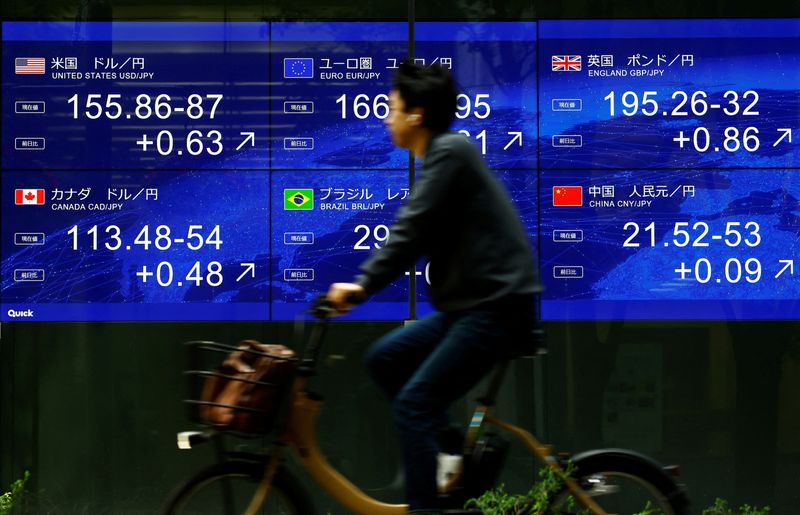
By Samuel Indyk and Kevin Buckland
LONDON (Reuters) -The U.S. dollar was broadly steady on Tuesday while the yen trimmed earlier losses as Japanese officials issued fresh warnings following two rounds of suspected dollar-selling intervention last week.
The Australian dollar fell from a near two-month high against its U.S. counterpart after the Reserve Bank of Australia refrained from ramping up hawkish signals, as some traders had anticipated.
The – which measures the currency against six major peers, including the yen, sterling and euro – was up less than 0.1% at 105.23, after dipping as low as 104.52 on Friday.
The index is up nearly 4% this year but fell almost 1% last week after the Federal Reserve ruled out further rate hikes and there were signs of a softening U.S. labour market.
“Overall we’re still more structurally positive on U.S. macro as a whole and think that is what is going to support the dollar in the coming year,” said Kirstine Kundby-Nielsen, FX analyst at Danske Bank.
The U.S. dollar was last up just 0.1% to 154.06 yen, having earlier risen as high as 154.60.
On Friday, it sank as low as 151.86 yen for the first time since April 10, as the soft U.S. jobs data fed losses following Bank of Japan data that suggested official intervention could have amounted to some 9 trillion yen ($58 billion).
Japan’s finance ministry has refrained from commenting on whether it was behind the dollar selling, but top currency diplomat Masato Kanda repeated on Tuesday that the government “will continue to take the same firm approach” to disorderly yen moves.
remove ads
.
He also acknowledged that an orderly market would not require the government to step in.
“Kanda noted that there was no need to intervene when markets are functioning properly, implying that they have not been functioning properly of late,” said Colin Asher, senior economist at Mizuho.
The carry trade remains a draw, with a Federal Reserve rate cut likely to take some time and the Bank of Japan taking a cautious approach to tightening after its first rate hike since 2007 in March, leaving a vast gap of 360 basis points between ultra-low Japanese long-term yields and their U.S. counterparts.
At the same time, DBS analysts estimate that even after last week’s bounce, the yen is still the most undervalued currency in the G10 grouping, while the dollar remains “highly overvalued”.
In a client note, they wrote, “We expect Japan to continue leaning against excessive JPY weakness.”
The fell after the RBA’s rate decision, where rates were kept unchanged, but the central bank stopped short of reinstating a tightening bias that some had expected as inflation failed to cool by as much as forecast.
In her press conference after the central bank’s widely-expected decision, governor Michele Bullock said the board believes monetary policy is at the right level to return inflation to target. The RBA hopes the economy won’t have to face additional rate hikes, Bullock added.
The Australian dollar was last down 0.5% at $0.6593, retreating from Friday’s high of $0.6650, a level previously seen on March 8.
remove ads
.
“It was a bit of ‘buy the rumour and sell the fact,'” said James Kniveton, senior corporate FX dealer at Convera.
“They (the RBA) remain vigilant to upside risk, but the hawkish bias the markets expected has not eventuated.”
The euro eased 0.1% to $1.0758 and sterling fell 0.2% to $1.2534 before the Bank of England’s policy announcement on Thursday.
($1=154.2000 yen)
Forex
Dollar steadies after payrolls-linked fall; yen falls again
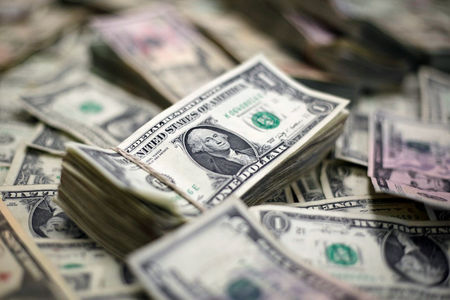
Investing.com – The U.S. dollar edged higher in early European trade Tuesday, attempting a comeback after the sharp losses at the end of last week, while the Japanese yen retreated despite more intervention threats.
At 04:35 ET (08:35 GMT), the Dollar Index, which tracks the greenback against a basket of six other currencies, traded 0.12% higher at 105.090, after falling as low as 104.52 on Friday, the lowest level for just under a month.
Dollar steadies after Friday’s drop
The dollar has steadied Tuesday currencies, recovering slightly from last week’s losses after softer-than-expected data saw traders once again begin pricing in interest rate cuts by the central bank.
Traders are now pricing in September as the favorite month for the Federal Reserve to start its rate-cutting cycle.
The economic calendar is light in the week ahead so the focus will be on several Fed policymakers who are due to speak.
Richmond Fed President Thomas Barkin has already started the ball rolling, saying interest rates in the U.S. currently stand at such “restrictive” heights that they can help tamp down demand and cool sticky inflationary pressures.
“It looks like Friday’s slightly softer U.S. jobs report has been enough to put paid to any ideas of a Fed hike this year,” analysts at ING said, in a note. “And whilst the pricing of the Fed easing cycle this year has grown (45bp of cuts now expected for this year), the biggest impact of last week’s FOMC/NFP double-header has been the decline in cross-market volatility.”
remove ads
.
German industrial orders fall
In Europe, traded 0.1% lower to 1.0760, after data showed that rebounded in March, buoyed by strong U.S. and Chinese demand for German-made goods, but a disappointing month for industrial orders dashed hopes for a swift economic recovery.
The has signalled a rate cut in June, but there remains a great deal of uncertainty over what happens with monetary policy after this.
traded 0.2% lower to 1.2534, ahead of Thursday’s meeting of the .
“Our core view is that it will still be a little early for the BoE to shift its cautionary position and signal a June rate cut,” said ING, with the bank looking for a cut in August rather than June.
“However, a June BoE rate cut is only 30% priced by the market and we doubt sterling has to rally too hard if the BoE’s language on Thursday is unchanged.”
Yen resumes its fall
In Asia, rose 0.2% to 154.13, bouncing after the pair sank as low as 151.86 on Friday for the first time since April 10, as softer-than-expected monthly U.S. jobs data added to Bank of Japan data that suggested official intervention could have amounted to over $58 billion.
The yen has resumed its fall despite Japan’s government’s top currency diplomat Masato Kanda saying on Tuesday that it may have to take action against any disorderly, speculative-driven foreign exchange moves.
pair rose 0.4% to 0.6599, after the kept rates steady as widely expected and warned that inflation will take longer to come down in the near-term.
remove ads
.
But the RBA stopped short of mentioning any plans for further rate hikes, disappointing traders that were positioning for such signals, especially after a hotter-than-expected inflation reading for the first quarter.
Forex
Asia FX weakens as dollar steadies; Aussie sinks as RBA sounds less hawkish
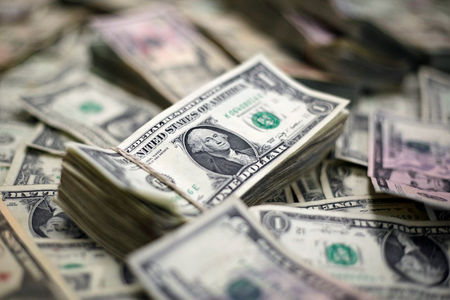
Investing.com– Most Asian currencies weakened on Tuesday, while the dollar steadied as focus remained on just when the Federal Reserve will begin cutting interest rates.
Underperformance in the Japanese yen persisted as the currency continued to reverse a bulk of its gains made on the back of government intervention last week.
The Australian dollar also fell after the Reserve Bank of Australia struck a less hawkish tone than markets were expecting, denting expectations for more interest rate hikes in the country.
Japanese yen weakens after intervention, USDJPY rises
Weakness in the Japanese yen persisted on Tuesday, with the pair, which is inversely representative of yen strength, rising 0.4% and past the 154 level.
The currency pair had risen as far as 160 in late April, before apparent instances of government dollar selling saw the pair fall sharply to as low as 152.
But the yen struggled to retain any strength, given that the main factor behind its decline- a wide gap between U.S. and Japanese interest rates- remained largely in play.
Markets are now looking to more readings on Japanese inflation and wage growth to gauge whether the Bank of Japan will hike interest rates further this year, which is expected to offer some relief to the Japanese currency.
Repeated verbal warnings of more intervention by Japanese government officials also provided little support the the yen, with traders regarding USDJPY at 160 as the new line in the sand for the government.
Australian dollar drops as RBA stops shy of mentioning rate hikes
remove ads
.
The Australian dollar’s pair fell 0.3% after the RBA kept rates steady as widely expected and warned that inflation will take longer to come down in the near-term.
But the RBA stopped short of mentioning any plans for further rate hikes, disappointing traders that were positioning for such signals, especially after a hotter-than-expected inflation reading for the first quarter.
This factored into weakness in the AUDUSD, given that higher rates make the currency appear more attractive.
Weak data for the first quarter also saw traders question just how hawkish a chord the RBA will strike.
Asia FX weakens as dollar steadies from recent losses
Broader Asian currencies fell slightly on Tuesday, as the and recovered a measure of last week’s losses.
Focus this week is on comments from several Fed officials on the path of interest rates, especially after softer-than-expected data saw traders once again begin pricing in interest rate cuts by the central bank.
But this notion offered little support to Asian currencies, given that the Fed is still expected to begin cutting rates only by September.
The Chinese yuan’s pair rose 0.2%, while the South Korean won’s pair rose nearly 0.3%.
The Singapore dollar’s pair rose 0.1%, while the Indian rupee’s pair rose marginally and was in sight of record highs hit in late-April.

 Forex2 years ago
Forex2 years agoForex Today: the dollar is gaining strength amid gloomy sentiment at the start of the Fed’s week

 Forex2 years ago
Forex2 years agoHow is the Australian dollar doing today?

 Forex1 year ago
Forex1 year agoUnbiased review of Pocket Option broker

 Forex2 years ago
Forex2 years agoDollar to pound sterling exchange rate today: Pound plummeted to its lowest since 1985

 Cryptocurrency2 years ago
Cryptocurrency2 years agoWhat happened in the crypto market – current events today

 World2 years ago
World2 years agoWhy are modern video games an art form?

 Stock Markets2 years ago
Stock Markets2 years agoMorgan Stanley: bear market rally to continue

 Economy2 years ago
Economy2 years agoCrude oil tankers double in price due to EU anti-Russian sanctions



